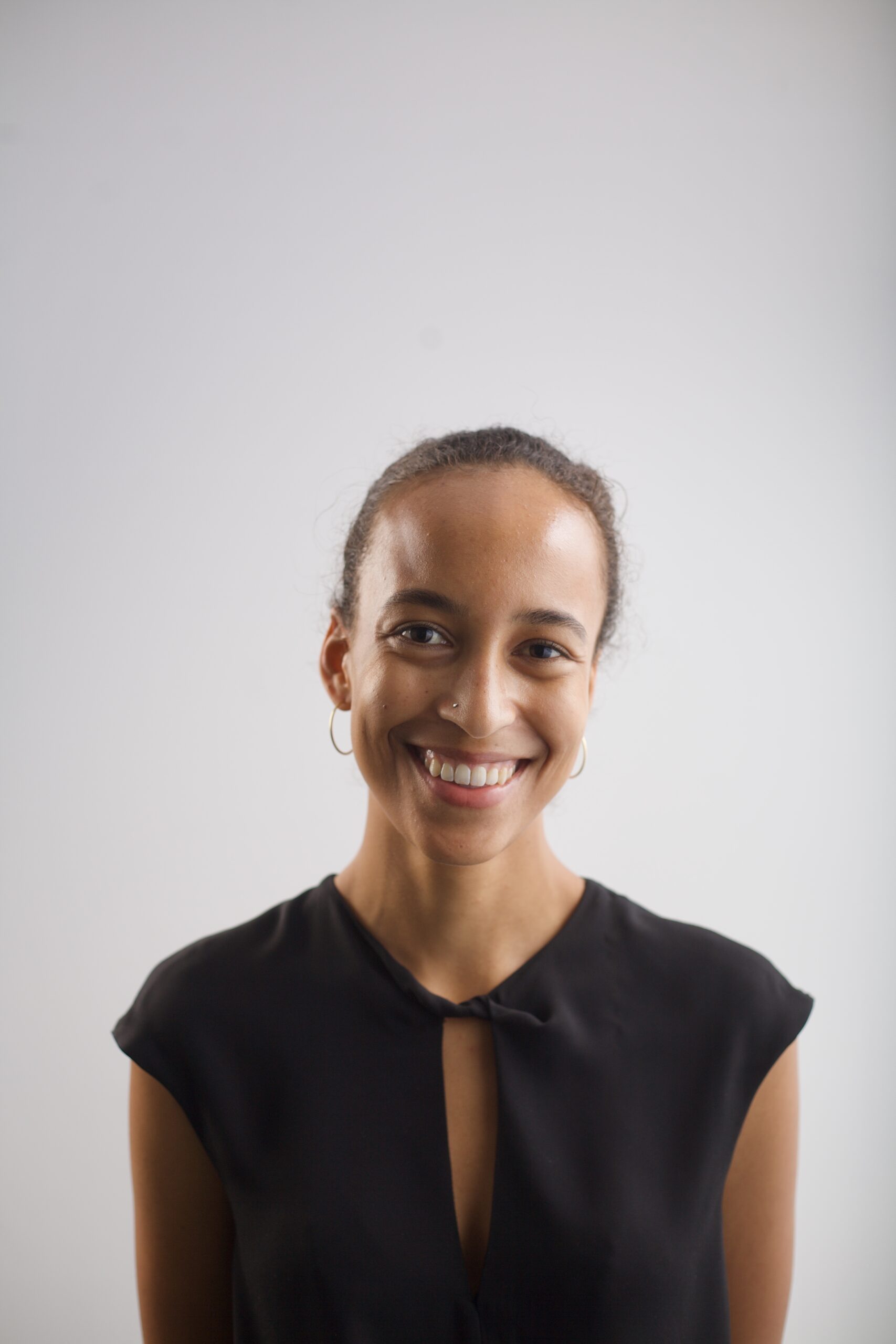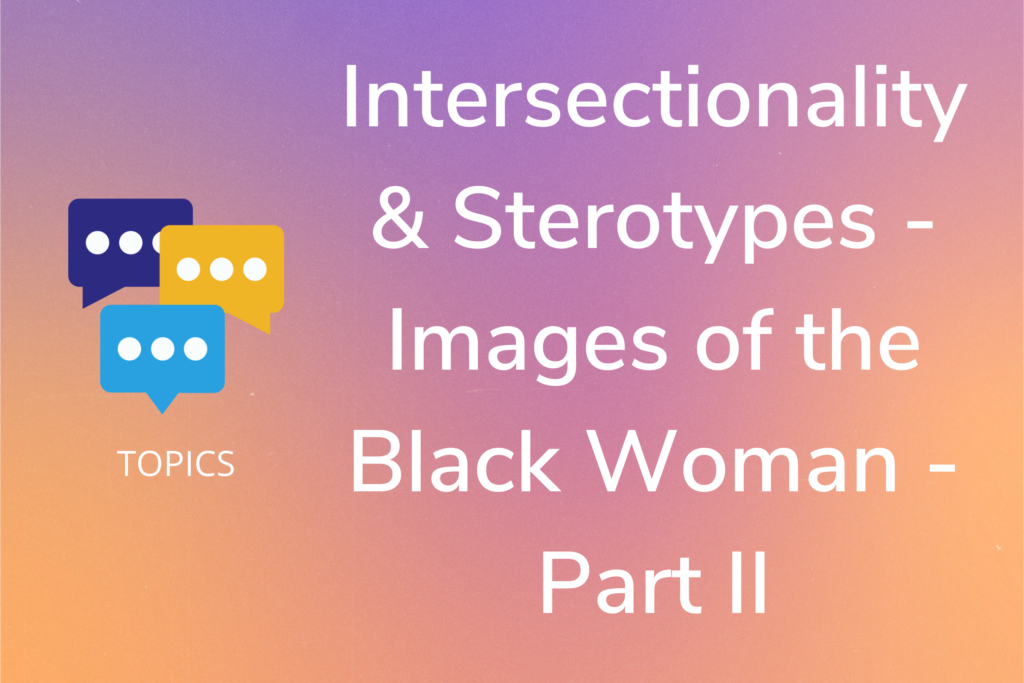In my last post I introduced you to the term intersectionality and explained how the entanglement of gender and ‘race’ influenced old U.S.-American stereotypes about Black women. As I have pointed out, these stereotypes developed during times of slavery and segregation in the U.S. However, with times also social discourses change and while these old stereotypes are still influential today, new images have found their way into the public imaginary of Black women.
It is said that especially the emergence of television after World War II has influenced new stereotypes about Black women. Also, the growth of Hip Hop culture in the 1980s influenced media representations of Black women, while here their bodies and (implied) sexuality were particularly focused. Again, I want to point out that the following descriptions refer to stereotypes that are influenced by social, cultural, and historical context as well as ideologies and power structures and do not represent reality. The presented stereotypes are particularly prominent in U.S.-American pop culture like popular music and television. However, since the media represent and (re)produce societal discourses they are influenced and influence general perceptions of Black women in everyday life. Given the global prominence of U.S.-American pop culture, this perception is not only limited to Black women in the U.S. but influences stereotypes worldwide.
Diva
The stereotype of the Diva is usually represented as a light-skinned, slim Black woman with straight hair who likes to be at the center of attention. Her physical attributes are often ascribed to denote ‘classical beauty’. In her characteristics the Diva is thought to be a well-mannered woman who ‘made it’ as she is earning her own money which she invests in herself and her appearance. Even though she has an income on her own, the classical Diva likes to be financed by a rich and successful man. Some theorists regard the Diva as derivative of the Jezebel stereotype (see my previous post). Famous representatives of the Diva stereotype are the singers of the RnB group ‘Destiny’s child’. In a survey Stephen and Few (2007) found that the Diva stereotype often serves as role model for Black female teenagers as she represents an attractive woman with desirable sexual relationships. The fact that this stereotype influences teenagers’ aspirations shows how stereotypes, even though they are constructed and do not represent reality, can have real effects on perceptions and behaviors. Further, constructing a Black woman who, despite the ability to maintain herself, strives to be dependent on a man and is fulfilling Westernized beauty standards (light skin and straight hair) as desirable ideal, reveals a patriarchal view as well illustrates the entanglement of racism and sexism.
Gold Digger
The image of the Gold Digger combines the old stereotypes of the sexualized Jezebel and the financially dependent Welfare Mother (see my previous post). The Gold Digger thereby represents an uneducated, unsuccessful woman who intends to gain material and financial wealth in exchange for sex. The negative connotation of that image again illustrates the entanglement of racism, sexism, and classism. While the Gold Digger again denotes a constructed stereotype it can have real effects in influencing people’s judgment of subjects who seemingly fall into this categorization.
Freak
Again, influenced by the stereotype of Jezebel is the image of the Freak which portrays a woman that likes to have a lot of sex without getting emotionally attached. This way she gains sexual control over her partners and simultaneously satisfies her own needs. In her appearance the Freak likes to wear short clothing, reminiscent of a stripper. However, an alternative portrayal of the freak is the so-called under-cover Freak who only at night reveals herself and uses night clubs for example to indulge in sexual desires.
Dyke
The Dyke regards the stereotypical representation of a Black woman who has sex with other women. The stereotype strongly communicates heteronormativity and homophobia as this sexual orientation is regarded as abnormal. It thus illustrates how heteronormativity systematically privileges subjects with a heterosexual orientation while excluding subjects who deviate from this socially constructed norm.
Gangster Bitch
Often used in hip hop culture is the stereotype of the Gangster Bitch. Commonly, this stereotype refers to a young Black woman who carries a weapon, shoplifts, and lives in a poor neighborhood that is marked by drug abuse and violence. Her male counterpart is the stereotype of the Gangster. As with all the other stereotypes mentioned here the constructed attribution of characteristics – in this case criminality – can have real effects on the societal perception of Black women with fundamental impacts on the course of their lives (e.g. access to education, career opportunities). This stereotype further illustrates the entanglement of media discourse and societal discourse as it expresses the stigmatization of poor neighborhoods in the U.S. While the stereotypes of Gangster and Gangster Bitch reduce issues in these neighborhoods to their inhabitants, structural reasons for poverty and criminality do not find expression here.
Sister Savior
In contrast to the aforementioned stereotypes, the Sister Savior is not influenced by the presence or absence of a man – at least not an earthly one. Women according to this stereotype avoid sex as engaging in sexual practices does not conform to their religious ideology. The Afro-American church is described to be influential in shaping this stereotype.
Earth Mother
Like the Sister Savior, the stereotype of the Earth Mother is not constructed around the influence of a man. This image represents a Black woman with a ‘natural appearance’ as natural hair (e.g., Afros or locks) and an afrocentric, political and spiritual self-esteem. A famous representative of this image is the singer Lauryn Hill.
These stereotypes show how different inequality generating social constructs intersect and can shape the (self-)perception of marginalized groups. Being aware of these entanglements is important to be able to deconstruct prejudice and come up with holistic concepts to work against social inequalities.
References and further literature
- Chesir-Teran, D. (2003). Conzeptualizing and Assessin Heterosexism in High Schools: A Setting Level Approach. American Journal of Community Psychology, 31(3-4), S. 267-279.
- hampton, d. (2000). Flick: Girls Interrupted – A gritty documentary zooms in on hardcore female hustlers. Vibe, 8(5), S. 169-170.
- Stephens, D. P., & Phillips, L. (2003). Freaks, Gold Diggers, Divas, and Dykes: The sociohistorical Development of adolescent african american women´s sexual scripts. Sexuality and Culture, 7(1), S. 3-49.
- Stephens, D., & Few, A. (2007). The Effects of Images of African American Women in Hip Hop on Earty Adolescents´ Attitudes Toward Physical Attractiveness and Interpersonal Relationships. Sex Roles, 56(3), S. 251-264.
- Tyree, T. (2011). African American Stereotypes in Reality TV. The Howard Journal of Communications, 22, S. 394-413.

What’s on TV? The role of gender and social status in media representation (Germany)
